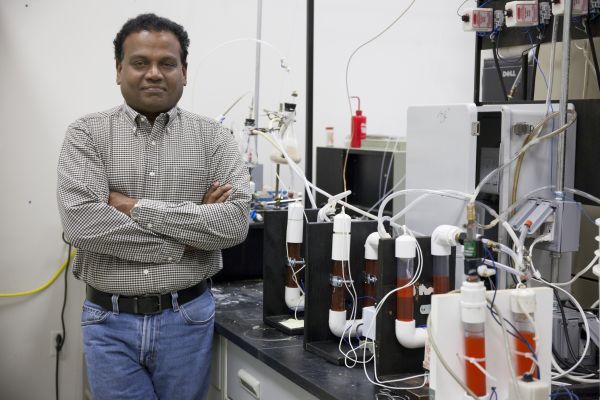A research team from the University of Florida has found a way to transform human waste into something as useful as a rocket fuel. Until now the waste produced during space missions were stored which was later burnt while entering Earth’s atmosphere, when the space cargo vehicle loaded with waste returns. However, between 2019 and 2024, NASA plans to build an operating base on moon for initiating future long-term space missions that would require a way to cut down the weight of spacecraft leaving Earth. Clearly, neither dumping waste on moon’s surface nor bringing back all stored excrement to Earth is the most practical solution. Therefore, NASA requested University of Florida to develop a workable solution.
Associate professor of Agriculture and Biological Engineering, Pratap Pullammanappallil explains that they are trying to figure out the amount of methane that can be generated from human excrement, food packaging and uneaten food. The figures would help them to understand whether the fuel produced from these is enough to launch rockets. If yes, then the future rockets would be much lighter and may not have to carry extra fuel from Earth for its way back journeys. Methane can be used as rocket fuel and ample methane can be generated to power rockets returning from the moon.
Anaerobic Digester Process
The team started the research with packaged form of chemically generated human waste, supplied by NASA and consisted of simulated food waste, washcloths, towels, clothing and packaging materials. These wastes underwent various tests to determine the amount of methane generated and the time taken. The test showed that the process can supply 290 liters of methane per astronaut per day, all produced within a week’s time.
They found a conversion process based on an anaerobic digester. The process slays unfriendly pathogens along with breaking the organic matter present in waste to yield biogas, which is blend of methane and carbon dioxide. It also produces 200 gallons of non-potable water every year. The water that is released as organic matter decomposes, is confined within the organic matter of the waste. Later, using electrolysis, water could be broken into hydrogen and oxygen. Astronauts can use the oxygen so produced as a back-up system whereas, carbon dioxide exhaled and hydrogen together can be transformed into methane and water in the process.
In future, the process could be put to use on Earth for activities such as electricity production, heating or transportation. Small waste conversion units can be installed in malls, hospitals, office or college campuses or a larger one around city that can fulfill its power needs by recycling waste. This would solve the problem of waste disposal along with minimizing the use of conventional non-renewable fuels.
Source: University of Florida





